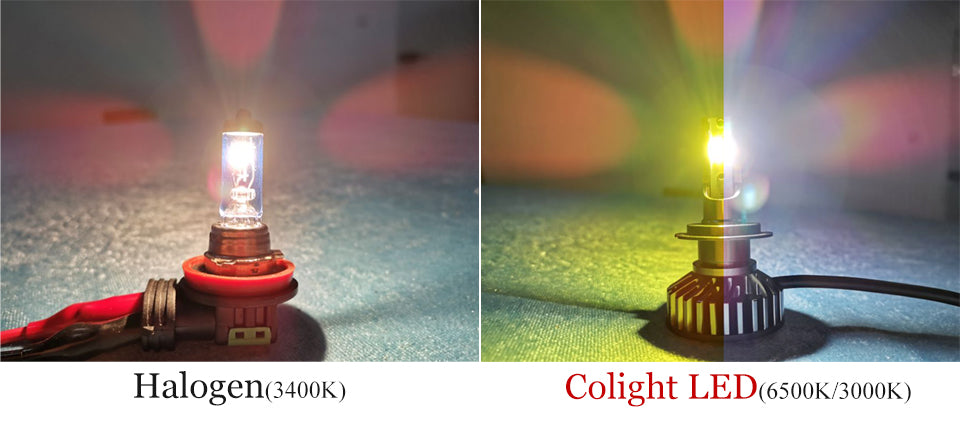Are you still hesitating between original halogen headlights and upgraded LED headlights? Then please read this article to understand the difference between halogen and LED, which will help you make a better choice!
Most vehicles are equipped with halogen headlight and fog light bulbs from the factory. They’re relatively inexpensive to manufacture and they get the job done. However, in the past few years, with the development of technology, auto manufacturers have begun to equip their vehicles with LED headlights, and the aftermarket is exploding with plug-and-play LED headlight conversion kits.
Next, we will distinguish their advantages and disadvantages from the aspects of lighting principle, color temperature, power and service life.
What are Halogen and LED Headlights?
Halogen is the most common and popular headlight among drivers around the world. They are a form of incandescent light bulb making use of a tungsten filament with a small amount of halogen gas. When a current is passed through the filament, it heats up. Heating the filament to this high temperature starts the incandescence process, thus creating light.
LED Headlights work in a completely different fashion to halogen bulbs. Unlike halogens that have a filament, LEDs operate by transferring current through a semi-conductor. This movement of electronics through a semiconductor emits photons, resulting in light.
Color Temperature

You can see the light output comparison of a typical halogen and upgrades LED headlight from the picture above. The Halogen emits 3400K yellow light. And, the LED headlight(Our latest dual-color LED headlight bulb F2D Plus) can emit 6500K white light and 3000K yellow light (most are 6500K white light).
Yellow light improves visibility in wet or foggy conditions, but it's harder to see with yellow lights in clear conditions. If there is such a dual-color temperature headlight bulb that can be switched at any time to deal with multiple weather scenarios, why not upgrade the headlights with it?
Power and Heat

As we can see, the halogen bulb needs 41 wattages to heat the filament then light up. And the heat on the surface is very hot. So when you want to replace the headlights, make sure that it is completely cooled, otherwise you will get burned.
But Colight F2D LED headlight only needs 22 wattages to light. That's the greatest advantage of LED headlights, they need very little power to operate and high lumen light output.
Brightness

From the picture above, the halogen bulb uses a 55w halogen headlight bulb and creates 670 Lumen of light with a yellow light. The LED produces 2,000 – 2,600 Lumen per light bulb which is 3 times brighter than halogen.
Lifespan
The lifespan of a headlight bulb depends on the balance of power and heat dispassion. Normally, the service life of halogen bulbs is about 1000 hours, but LEDs can reach up to 30000 hours.
Conclusion
To conclude, LEDs are brighter and better. With the development of technology, more and better LED headlights will appear. If you’re willing to face the cost you’re in for an improved lighting experience, and with time the cost may actually pay off.
| Tech | Advantages | Disadvantages |
| Halogen | 1. Good Illumination 2. Low Cost 3. Mature Product |
1. Short Life 2. Fragile 3. Rapid Light Output Reduction |
| LED | 1. Best Illumination 2. Low Voltage Used 3. Multi-Color Output 4. Glare Control 5. Long Life |
1. Higher Cost 2. Extra Current Adapter |
It should be noted that many jurisdictions do not allow the replacement of halogen light bulbs with LED lamps for safety reasons. It’s possible to get away with it if you’re careful, but make sure you’re up to date on local laws.


